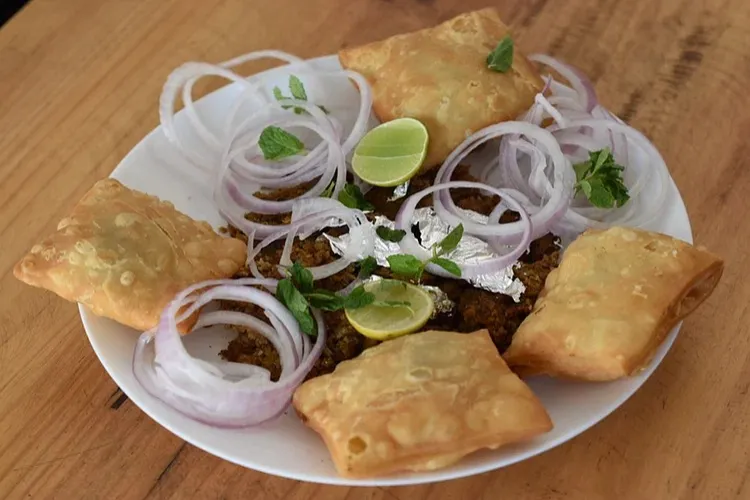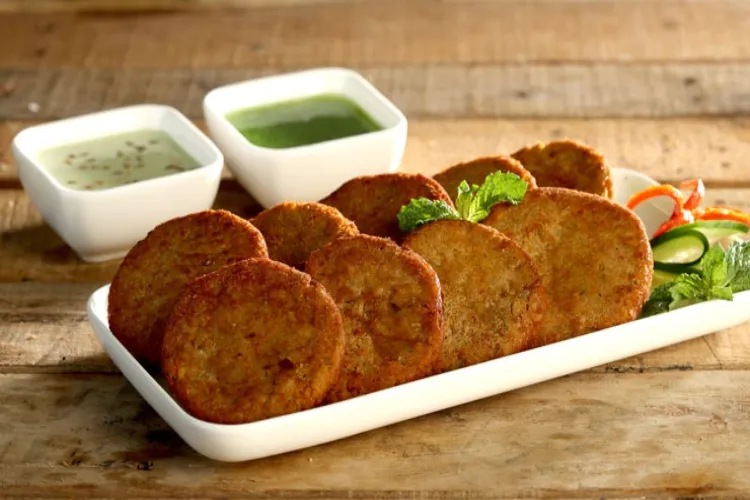
Ratna G. Chotrani/Hyderabad
Beneath its touristy luster, Hyderabad preserves a deep traditional culture and a cuisine that has a long-standing Mughlai Turkic and Arabic influence. Known for its distinctive culture, countless traditions, artistic practices, and most importantly cuisine Hyderabad cuisine is one of the best favoured across the globe. Be it the famed Hyderabadi Kacche gosht ki Biryani or the Patthar ka ghost and many more -a ll have a distinct taste and place on the gastronomical map. Many of these dishes that Hyderabad boasts of have a rich history behind them and have evolved over hundreds of years.
Most of Hyderabadi cuisine is known for its rice, wheat meat, and spice-based dishes that are prepared finely with utmost exquisiteness. The first-time visitors to Hyderabad might be treated to a Biryani and the Irani chai but there is more to Hyderabadi cuisine than just that. Not to say there isn’t great biryani in Hyderabad but it’s striking to see how much the city’s food landscape has to offer
Listed by UNESCO as a creative city of gastronomy with influence from French, Arabic, Turkish, Iranian, and native Telugu and Marthwada cuisines many delicacies have been lost to time, and one such cuisine is Tootak a recipe that has been forgotten with time and evolution.

Hyderabadi Dishes
But with a purpose to rediscover the tradition Prateek Mathur a banker turned Chef caters to some of the tastiest menus. Prateek Mathur unearthed this food which was diffused into the pages of history. These recipes are no longer found in cookbooks and have evolved through time. He evaded through folk and lore to find the original and realized that it continued to be cooked on special occasions at his home in the backyard. With an interest in reviving it, he started the Prateek Marthur caterers.
He has pieced together enthralling old recipes from Hyderabad’s past that take us beyond the now popular Biryani, Kebabs Haleem, and Kormas captivating nuggets of culture and throwing up some true gems.
Kayasth were traditionally a writing caste whose prowess with Persian made them valuable to the Mughal administration. Hence these folks were indispensable for the Mughal Administration as they were among the first to guzzle up the finer nuances of Farsi when Allaudin Khilji expanded his footprint into the subcontinent.
Kayasth, who were keepers of records and administrators in the Courts of Nizam, have an imprint on the city’s cuisine. During such senseless strife, Kayasth has set a beautiful example of an embracing culinary smorgasbord (Melange).
The Kayasth have skilfully adapted gastronomy traditions into a delectable mélange of Mughali cuisine Prateek too in his quest to revive the lost cuisine from the kitchens of Nizam has come up with Tootaks a delicious appetizer aromatic dish straight out of the royal kitchens of Hyderabad. It is known for its stuffing and mélange of exotic flavours.
Tracing the etymology of the dish it is believed that the name was coined after a saying which goes like “Tu Takta Reh Jayega” Tootak is derived from the first words of this phrase which means to be left astounded. The dish belonging to the Deccan family of recipes the Nizam of Hyderabad offered as a welcome gesture to his guest.

Hyderabadi Dishes
This appetizer-cum-dessert has a hard outer shell like a shortcrust pastry and a soft inside filling and is stuffed with dry fruits and meat mince. The pastry covering is made with semolina and kneaded with pure ghee in large quantities, milk, and saffron and then stuffed with mince and dry fruits baked on charcoal and served. This Nizam’s favourite starter was originally from a Hindu Kayasth community. While it was popular back then, today the tootak is struggling to look for a place, waiting to astound its tasters again.
In addition to Tootaks, he serves Kashmiri Louz in which mutton is cooked and ground as Nizam wanted something soft for his aging teeth. Mutton is ground and cooked just like a cake. Meat ghee and eggs are used to give that sheen and texture
His menu also boasts of the melt-in-the-mouthPatthar ka Ghost one such dish that traces its roots in the royal courts of the Nizams In those days, these rulers preferred lamb or mutton over chicken or any other meat. Patthar ka gosht, for those untouched by the phenomenon, is a rendition of slab meat where the lamb meat with spices is slow-cooked over a piece of slab and roasted to perfection.
Besides, there is Sheekh Kebabs, Malai chicken (the name may sound similar to the malai kebab but the procedure is different ) Angrezi Cutlet boneless mutton mixed with vegetables and fried to perfection,
Shikampur succulent mutton cooked and made into patties stuffed with green chilies, curd, and onion mince mixture, Kheema ke Lukmi – minced meat stuffed in a samosa covering and deep fried Mutton Nihari shanks of mutton cooked in a stew form slow cooked with special potli masala Mutton rain- whole leg of mutton slow cooked with spices and many more
ALSO READ: How Assamese Muslims adapted Mughal Biryani into Kurma pulao
His dishes delight diners with the out-worldly taste and the finesse with which these are presented on a platter. His orders are jam-packed and therefore prior order is a must. Its popularity is evident from the fact that you have to place orders a day before even though they are made daily. They are delivered through the delivery apps.
